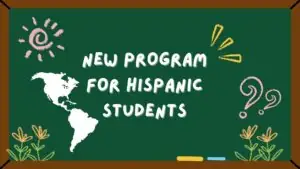The U.S. Department of Education’s announcement of a $50 million initiative to aid underresourced colleges with the FAFSA rollout has left many institutions seeking clarity on eligibility criteria.

✅ AI Essay Writer ✅ AI Detector ✅ Plagchecker ✅ Paraphraser
✅ Summarizer ✅ Citation Generator
Key Takeaways:
- Minority-serving institutions, particularly those not explicitly categorized as HBCUs or TCUs, face additional ambiguity and concern over accessing the promised aid.
- Calls for broader eligibility definitions and concrete support measures highlight the pressing need for clear guidance and inclusive assistance to ensure equitable access to federal FAFSA support.
The U.S. Department of Education has pledged substantial financial and advisory support to assist “underresourced” colleges. However, the criteria for eligibility remain vague, leaving many colleges in a state of uncertainty. This situation has sparked concerns across the higher education landscape, particularly among minority-serving institutions, about who will benefit from this much-needed assistance.
Clarity in Federal FAFSA Support
In response to the troubled rollout of the updated FAFSA system, the U.S. Department of Education, in collaboration with nonprofit partners, has committed $50 million to support colleges struggling with the application process. This initiative aims to dispatch financial aid experts and advisers to “severely under-resourced campuses,” with a particular emphasis on minority-serving institutions, which have been disproportionately affected by the FAFSA delays. Despite this announcement, the lack of clear eligibility criteria has left many institutions in limbo, uncertain if they will receive the promised aid.
The Education Department has specified that all historically Black colleges and universities (HBCUs) and tribal colleges and universities (TCUs) are eligible for direct support. Yet, for other institutions, the definition of “under-resourced” remains ambiguous. This uncertainty is a significant concern for colleges like Trinity Washington University and Mount St. Mary’s University Los Angeles, both of which serve large populations of low-income and minority students but are unsure if they qualify for the program.
“On the one hand, I’m happy to see MSIs singled out for this, and it’s important to recognize HBCUs and TCUs. But my mind goes to other kinds of MSIs that have historically been overlooked in terms of funding, like predominantly Black institutions”—colleges that serve a majority-Black population but don’t have the historic mission of HBCUs—“and Hispanic-serving institutions,” says Andrés Castro Samayoa, assistant professor of education at Boston College and a scholar of MSIs.
The ambiguity surrounding eligibility criteria has potential implications for the allocation of resources. With a finite $50 million budget, the distribution of funds and support services among deserving colleges is a critical issue. The situation is further complicated by the varying needs and capacities of institutions, from small, tuition-dependent colleges to larger, more resourced universities that also serve significant numbers of low-income students.
College leaders and administrators have expressed frustration and confusion over the lack of detailed information from the Department of Education. The National Association of Independent Colleges and Universities (NAICU) and other stakeholders have called for broader definitions of eligibility to ensure that a wide range of institutions can benefit from the support. Meanwhile, colleges are adapting to the FAFSA delays by extending admission and financial aid deadlines, a move that underscores the pressing need for assistance.
“We don’t know how the department is defining underresourced colleges, but we hope they define it broadly, because every one of our institutions wants to take advantage of these resources. How contentious this becomes really depends on how narrowly the department defines what kinds of colleges are eligible. We’re hoping to get some clarity on that next week,” comments Justin Monk, NAICU’s director of student and institutional aid policy.
As part of the support plan, the Department of Education’s nonprofit partner, NASFAA, will utilize its Blue Icon Advisors service to recruit financial aid professionals who can offer on-campus and remote consultation. However, this approach has been met with skepticism by some college presidents, who question the efficacy of external consultants in addressing the systemic issues exacerbated by the FAFSA rollout.
In addition to logistical support, there are calls for the Department of Education to consider waiving income verification requirements and resolving technical glitches that have hindered the application process. Such measures could alleviate some of the immediate pressures facing colleges and students alike.
Follow us on Reddit for more insights and updates.





Comments (0)
Welcome to A*Help comments!
We’re all about debate and discussion at A*Help.
We value the diverse opinions of users, so you may find points of view that you don’t agree with. And that’s cool. However, there are certain things we’re not OK with: attempts to manipulate our data in any way, for example, or the posting of discriminative, offensive, hateful, or disparaging material.